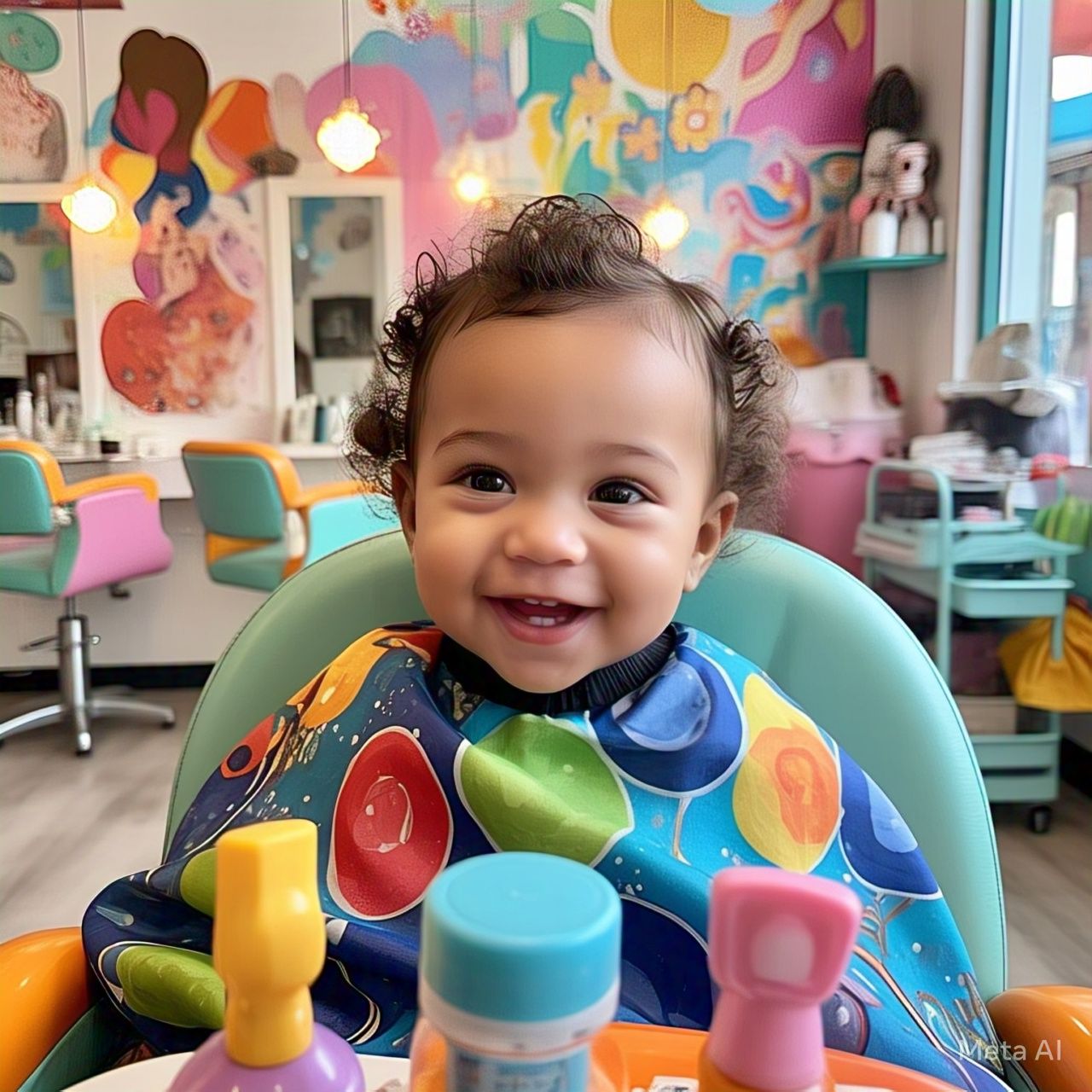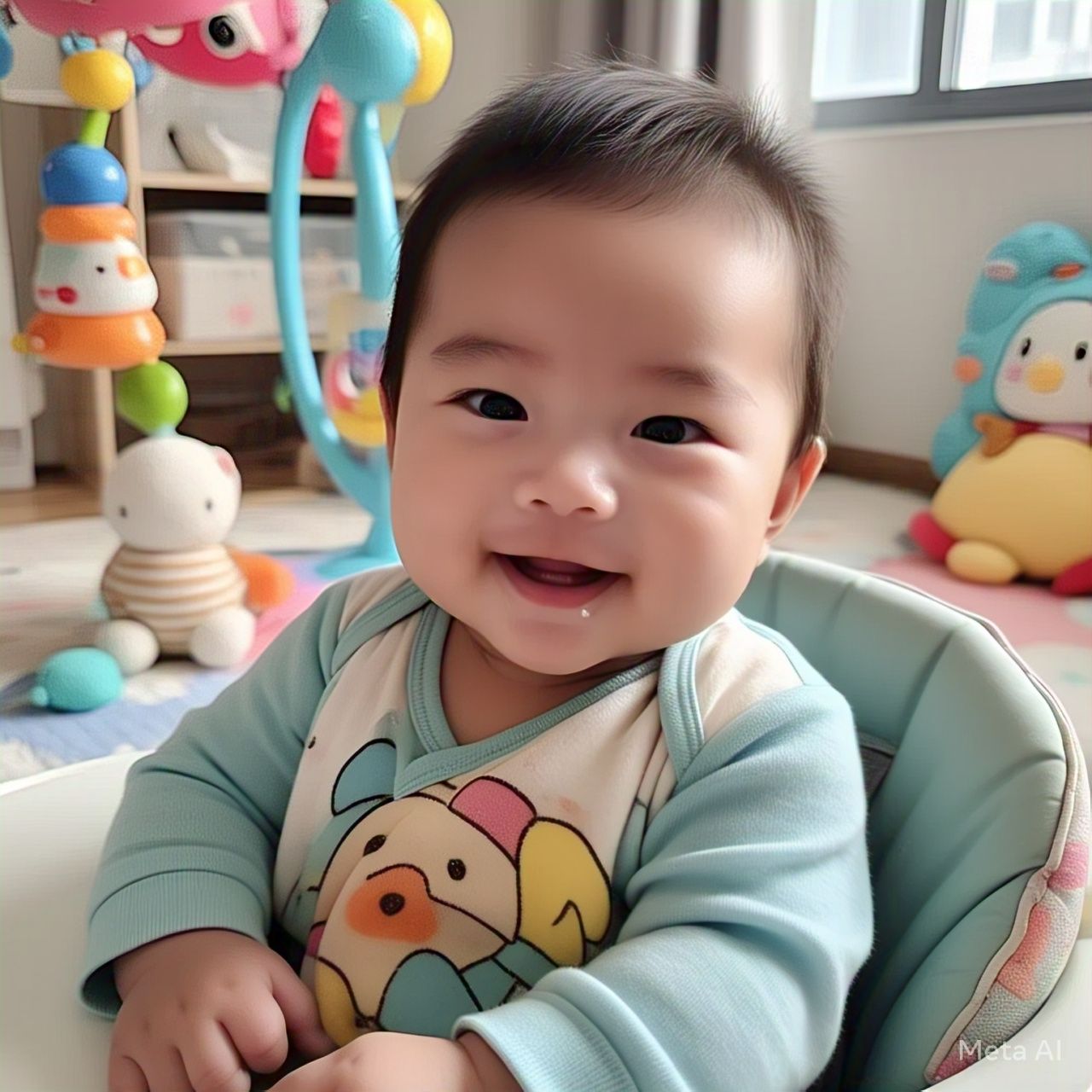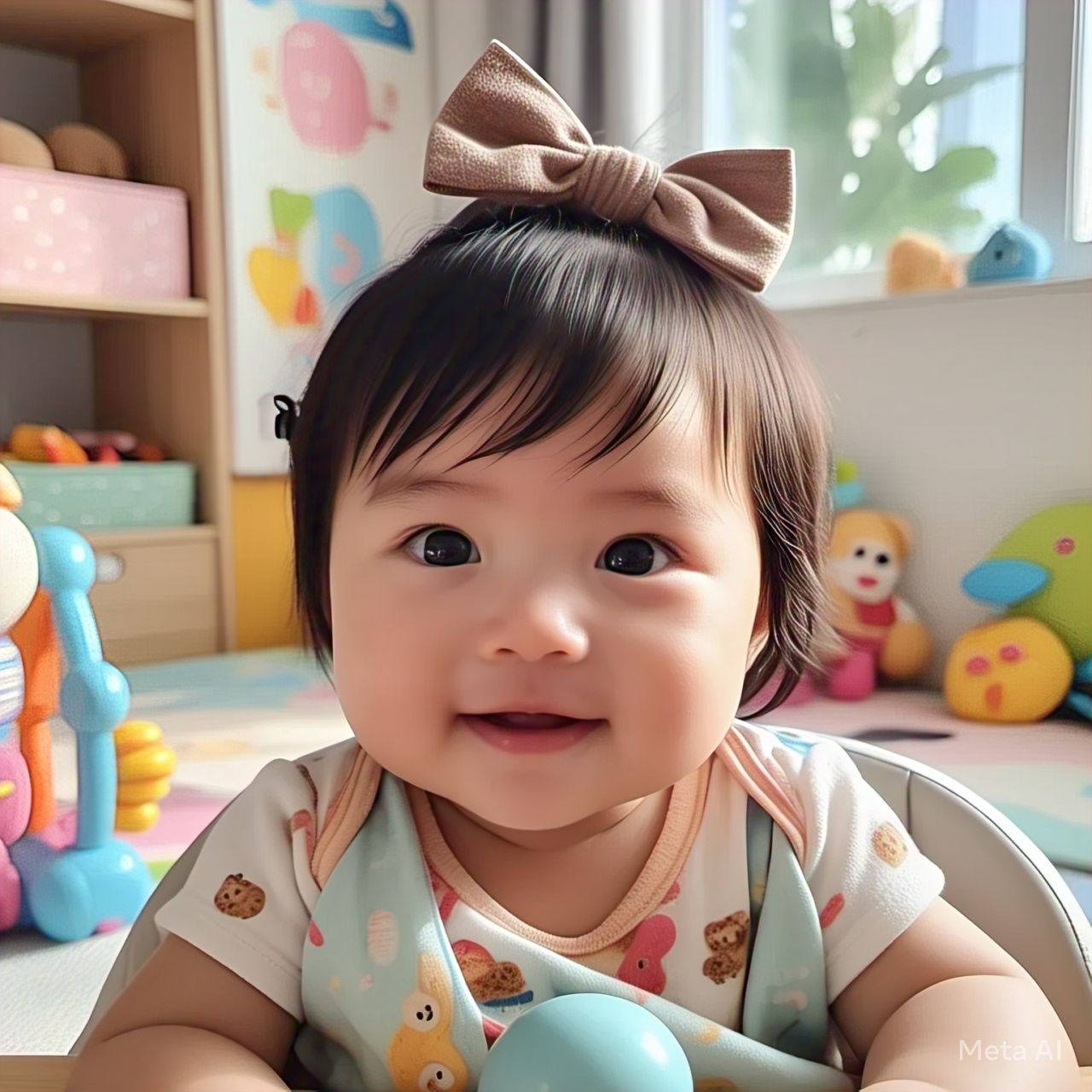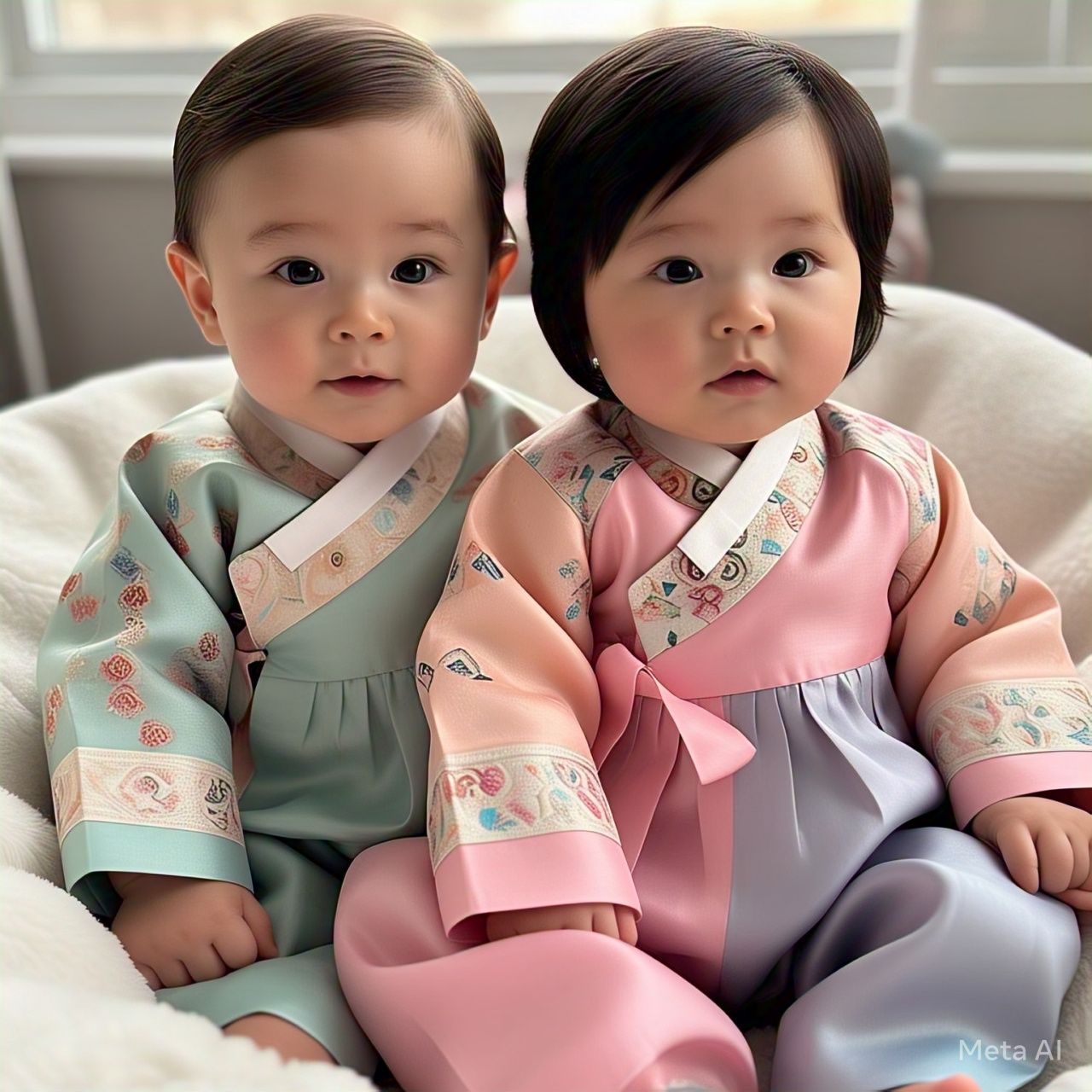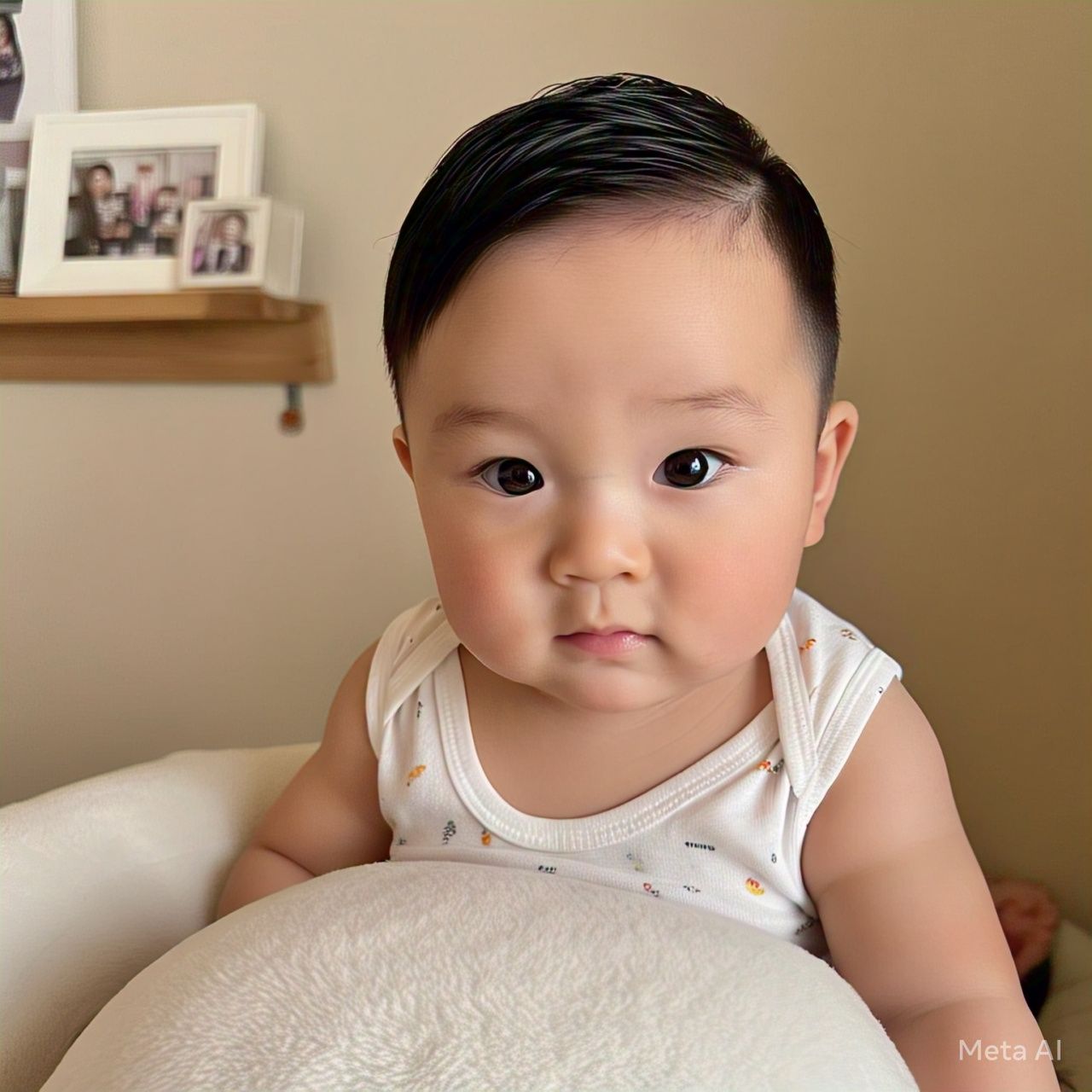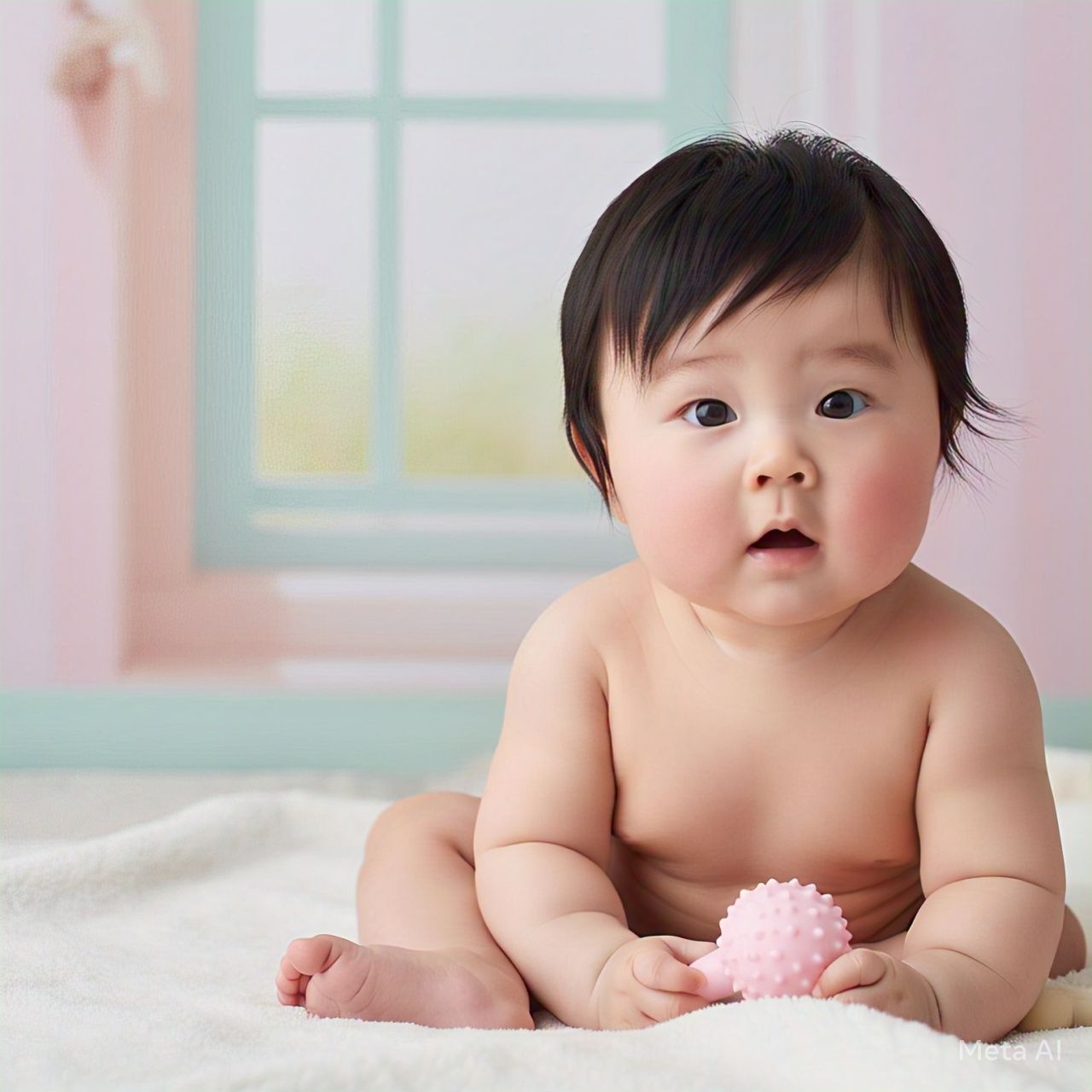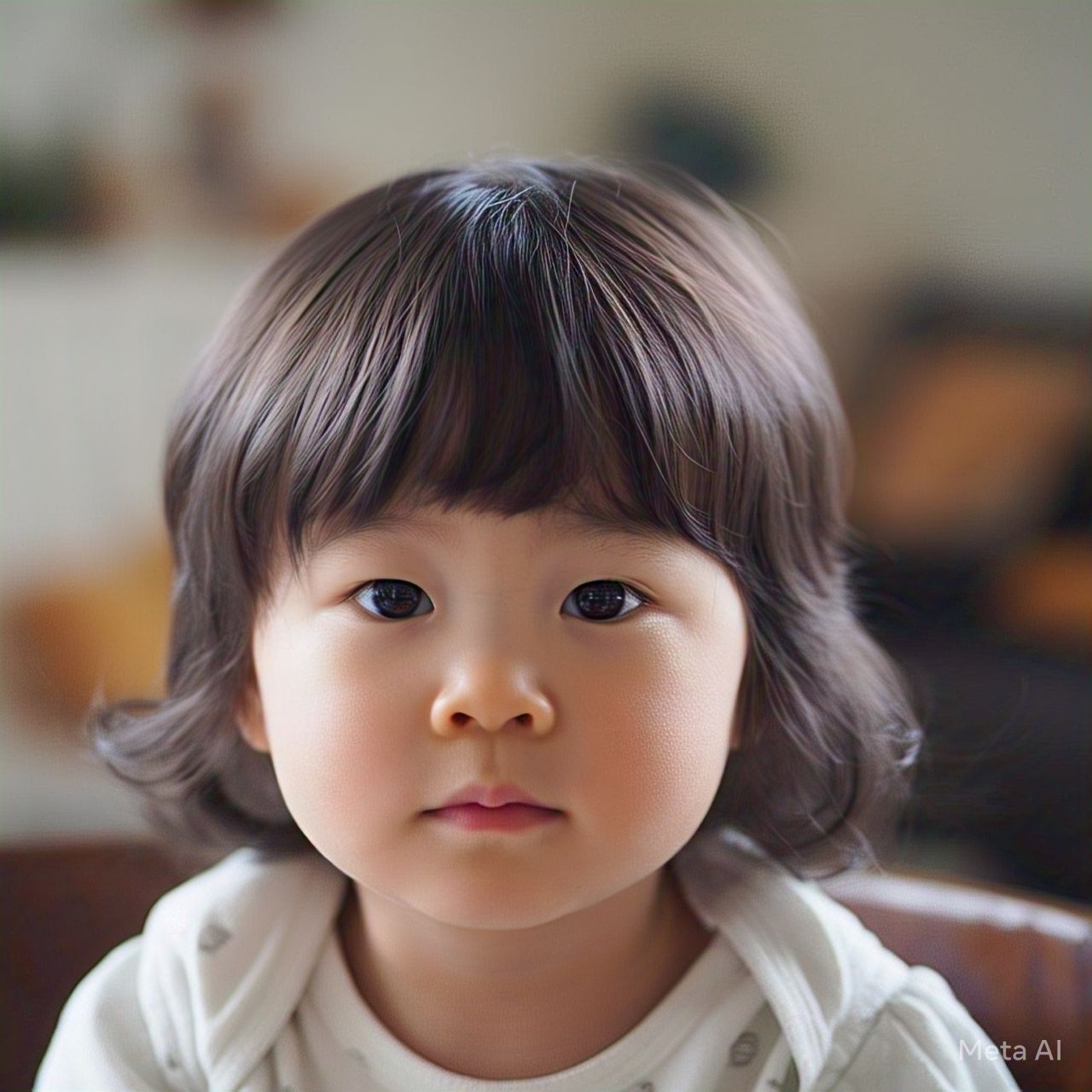Korean Baby Haircuts and Cultural Influence
Why Korean Baby Haircuts Have Captivated Parents Worldwide
In recent years, Korean baby haircuts have surged in popularity far beyond the borders of South Korea. This rise can be attributed not only to the global appeal of Korean pop culture but also to the effortless charm and polished simplicity that defines Korean aesthetics. The appeal lies in the ability to take something as ordinary as a child’s haircut and elevate it into a form of personal expression. Whether it’s influenced by a beloved K-drama character or shaped by generations of cultural tradition, Korean baby hairstyles continue to make a strong impression in toddler fashion trends.
Parents from all over the world have found themselves inspired by these styles, often drawn to the softness, symmetry, and youthful innocence that many Korean baby haircuts emphasize. These haircuts are designed not only to look adorable but also to suit the comfort and maintenance needs of young children. Korean stylists often prioritize practicality, ensuring the haircut supports the child’s active lifestyle while still reflecting a well-groomed and trendy image.
Cultural Beauty Standards and Their Impact on Hair Trends
In Korea, beauty standards often emphasize clear skin, delicate features, and a well-maintained appearance. This mindset naturally extends to children as well, with parents placing importance on neat and attractive hairstyles from a young age. A toddler’s haircut, in this cultural context, is more than a necessity—it becomes an early introduction to self-care and grooming habits.
Korean hair salons catering to children are well-aware of these ideals, and they often offer tailored experiences for young clients. From brightly colored interiors to cartoon-themed seats, the entire salon visit becomes an enjoyable and memorable event. Stylists use their expertise not only to cut hair with precision but also to help children feel at ease during the process. The result is a haircut that is as joyful to receive as it is to wear.
The Rise of Korean Pop Culture in Parenting Decisions
Korean entertainment has had a significant impact on global fashion and lifestyle trends, and this influence extends to how parents perceive toddler grooming. With the global boom of K-dramas, K-pop, and Korean variety shows, many families are drawn to the styles sported by child stars and celebrity babies. As these young personalities often appear with charming haircuts that perfectly suit their small faces and lively expressions, they set the tone for what becomes desirable among parents of toddlers.
Some of the most well-known child stars in Korea have inspired popular haircut trends, leading parents to seek out similar styles for their own children. These trends spread through social media, parenting forums, and blogs, where caregivers share photos, reviews, and tips for achieving the best Korean-style haircut. The styles are praised for their adaptability to various hair types, and their ability to highlight a child’s features without looking overdone or unnatural.
The Importance of Hair in Early Childhood Identity
For many parents, a toddler’s hairstyle is not just a fashion statement—it’s a marker of growth and individuality. A child’s first haircut is often seen as a milestone, signifying their transition from infancy to toddlerhood. In Korean culture, this moment may even carry symbolic weight. Traditionally, the first haircut is preserved or commemorated in special ways, such as saving a lock of hair or including it in a keepsake.
Haircuts during this stage of life are about more than aesthetics. They serve as a way for parents to express their love and care, showing pride in their child’s appearance. Korean baby haircuts often balance simplicity with charm, allowing the child’s personality to shine through while maintaining an overall polished look. These styles can help toddlers feel confident, especially when they receive compliments or recognition from family and friends.
Trends Rooted in Practicality and Emotional Warmth
One of the defining features of Korean baby hairstyles is how well they blend cuteness with functionality. Toddlers are in constant motion, and their hair needs to work with their busy routines rather than against them. Haircuts are often designed to keep strands away from the eyes, minimize tangling, and require minimal styling each day. This focus on practical living ensures that even the most stylish cut still suits the demands of toddler life.
However, these cuts are never purely utilitarian. Korean stylists approach each haircut with a sense of emotional care, often engaging warmly with their young clients and shaping the style to suit the child’s natural hair texture and facial features. This thoughtful approach contributes to the universal appeal of Korean baby hairstyles. They are created with intention, always balancing the line between cute and comfortable, trendy and timeless.
Exploring Haircuts That Capture the Spirit of Childhood
The beauty of Korean baby haircuts lies in their ability to highlight the innocence, playfulness, and warmth that define early childhood. Whether the cut is a gentle bowl style with soft bangs or a layered pixie cut for a bouncy finish, each design brings out something special in the child’s character. These styles are meant to evolve with the toddler as they grow, becoming part of cherished family photos and lifelong memories.
Some of the most beloved styles include the iconic straight bangs, often paired with a bob or short crop, which give a neat and expressive look to any child’s face. Others may opt for tousled layers or fluffy fringes that bring softness and spontaneity to the style. As these trends continue to gain popularity, more variations and personalized touches have emerged, giving parents plenty of options to consider.
Why This Article Matters for Modern Parents
As the world grows more connected, cultural styles like Korean baby haircuts become not only accessible but celebrated. Parents want the best for their children, and this includes helping them look and feel their best from a young age. Understanding the origins, meanings, and trends behind these styles can empower families to make informed choices that honor both cultural appreciation and personal expression.
This article will explore various types of Korean baby haircuts, the practical and aesthetic reasons they are so widely loved, and how parents can select the perfect cut for their little ones. In the following parts, readers will discover detailed descriptions of trending styles, tips for maintaining toddler hair, and suggestions for finding the right hairstylist or salon.
Embracing Cultural Style with Heart
Korean baby haircuts have transcended regional fashion to become a global phenomenon rooted in charm, comfort, and careful craftsmanship. For parents seeking a fresh, adorable look for their toddler, these hairstyles offer a wonderful blend of tradition and modern appeal. More than just a trend, they represent a thoughtful approach to self-presentation and parenting. As we move into the next section, the focus will shift toward examining specific haircut styles that are capturing the hearts of families around the world, each with its own story and significance.
Exploring the Most Popular Korean Baby Haircut Styles
Timeless Toddler Styles: Why Korean Haircuts Stand Out
Korean baby haircuts are more than a fleeting trend. They reflect an intentional blend of cultural heritage, fashion-forward thinking, and an instinctive understanding of what works for toddlers. These haircuts have been carefully developed over time to meet the dual needs of appearance and ease of maintenance. As a result, the styles are both classic and contemporary, offering parents dependable choices that always deliver that signature dose of cuteness.
In this part of the article, each hairstyle will be examined not only for its visual appeal but also for the ways it complements a toddler’s lifestyle. From soft textures to iconic silhouettes, these cuts manage to enhance a child’s features while keeping daily grooming manageable for caregivers. Korean baby haircut styles are both rooted in tradition and responsive to modern sensibilities, which makes them adaptable for a wide range of families.
The Classic Bowl Cut: Neat, Rounded, and Undeniably Cute
One of the most iconic Korean baby hairstyles is the bowl cut. Characterized by its rounded shape and even edges, the bowl cut offers a tidy, uniform look that frames the toddler’s face in a gentle, symmetrical way. It’s particularly suited for straight or wavy hair textures, allowing the cut to maintain its form without much styling effort.
What makes the bowl cut so appealing is its versatility. It can be worn with or without bangs, and the length can be adjusted to suit the child’s age or face shape. Many parents choose this style because it offers a clean, approachable appearance that looks adorable in both casual and formal settings. The even lines emphasize the softness of a toddler’s features, giving them a cherubic presence that photographs beautifully.
While some may associate the bowl cut with old-fashioned trends, Korean hair stylists have modernized it through subtle layering, texture work, and fringe variations. These updates give the cut a contemporary feel while retaining its timeless silhouette. For toddlers with expressive eyes and rounded cheeks, the bowl cut continues to be a favorite because of its unmatched charm.
Soft Layered Bob: Effortless Style for Active Toddlers
The soft layered bob is another popular Korean baby haircut that captures the essence of playfulness and grace. Unlike a traditional bob, this version uses gentle layers to create natural volume and texture. The style is ideal for toddlers with fine or thick hair because it adapts easily to different densities and hair movement.
What sets the soft layered bob apart is how well it balances polish and spontaneity. The layers help reduce heaviness while adding bounce, making the hair appear fuller without seeming bulky. For toddlers who are constantly in motion, this haircut moves with them, creating a dynamic yet tidy look. It also allows for easy morning routines, since the layers naturally fall into place without requiring styling tools or products.
Parents often appreciate the practicality of this cut, especially when their child’s hair is growing out. The layered bob transitions well between stages, looking intentional even as it grows. It also works well with both blunt and side-swept bangs, giving parents the option to personalize the cut based on their child’s features and preferences.
Short and Spiky Crop: A Bold Look for Confident Little Ones
For toddlers with strong personalities or high energy levels, the short and spiky crop offers a fun, bold alternative to more traditional styles. This haircut is closely cropped on the sides and back, with slightly longer lengths on top to allow for texture and lift. Though typically more common among boys, the spiky crop is gaining popularity among girls as well, especially in urban and fashion-conscious circles.
The spiky crop is a perfect reflection of Korea’s evolving sense of style for children. It introduces a playful edge while still keeping the overall look age-appropriate. Toddlers with thick or coarse hair can benefit from this cut because it helps reduce bulk while still showcasing their natural hair texture. Even soft, fine hair can be styled into gentle spikes, offering a fresh and animated appearance.
This style is also favored for how easy it is to manage. Parents can apply a small amount of water or lightweight baby-safe styling cream to add definition, or simply let the hair air-dry for a carefree, tousled finish. It’s an excellent haircut for warm climates or active lifestyles, and it gives toddlers a look that’s both expressive and manageable.
The Curtain Bang Bob: Trendy and Picture-Perfect
Curtain bangs have made their way into adult fashion, but the toddler version offers its own uniquely adorable twist. Paired with a soft bob or medium-length haircut, curtain bangs gently part at the center or slightly off to the side, framing the child’s forehead and eyes. This look is ideal for children with delicate facial features, as it adds softness and symmetry to the overall silhouette.
The curtain bang bob is especially popular among parents who want a chic, editorial feel to their toddler’s haircut without sacrificing functionality. The parted fringe allows for flexibility, meaning it can be clipped back, swept to the side, or styled into place depending on the day’s mood. When cut by a skilled stylist, the bangs grow out gracefully, which helps extend the life of the haircut between appointments.
Toddlers with straight or slightly wavy hair benefit the most from this style, as the natural fall of the hair keeps the curtain effect smooth and elegant. While the cut does require occasional trims to maintain its signature look, the overall upkeep is minimal, making it a favorite for parents who want a balance of fashion and practicality.
Pixie Cut with a Whimsical Flair
The pixie cut has long been a favorite among adults for its bold simplicity, and its adaptation for toddlers brings a lighthearted charm that’s difficult to resist. Korean stylists often infuse the toddler pixie with soft edges and wispy layers, transforming it into a gentle and playful haircut that suits a wide range of hair textures and face shapes.
What makes the pixie cut work so well for toddlers is its ability to spotlight the child’s expressions. With minimal hair to obscure their features, toddlers with pixie cuts often look more animated and engaged. This style can be tailored with micro bangs, a side fringe, or even a textured crown to give it more personality and dimension.
Parents who choose this cut typically appreciate the low maintenance it offers. It dries quickly, requires no combing or detangling, and looks stylish without any effort. For children who dislike hair in their faces or become fussy during brushing, the pixie cut can be a liberating choice. It’s especially useful during hot weather or busy schedules, where simplicity becomes essential.
Medium-Length Waves with Fringed Bangs
Not every toddler hairstyle needs to be short or structured. Korean hair trends also embrace medium-length styles, particularly when combined with soft waves and fringed bangs. This look is perfect for toddlers with naturally wavy or curly hair, as it emphasizes the child’s texture while keeping the overall shape tidy and balanced.
The key to this style is the integration of light bangs that sit just above the eyes, creating a sweet, bohemian vibe. Unlike blunt or heavy bangs, the fringed version offers a softer, feathered effect that grows out gracefully. Parents love this style for its romantic and playful appearance, which is often seen on child actors and models in Korean media.
This haircut pairs well with light styling products designed for children, especially when encouraging the waves to take shape after a bath or hair wash. The mid-length allows for hair clips, headbands, and accessories, giving parents and toddlers a chance to play with different looks without changing the basic cut.
Styles That Celebrate Youth and Individuality
Korean baby haircut styles are more than just adorable—they are thoughtful reflections of a child’s energy, personality, and development. Each of the popular styles covered in this section offers a different approach to toddler grooming, but they all share a commitment to balance: between tradition and innovation, between beauty and comfort, and between childhood charm and personal identity.
Whether it’s a perfectly rounded bowl cut or a trendy curtain bang bob, these hairstyles give toddlers a chance to express themselves from the earliest stages of life. Parents have a rich palette of options to explore, each one designed to bring out the best in their little one’s natural features and lifestyle needs.
Caring for Korean Baby Haircuts – Maintenance Tips and Toddler Hair Health
Understanding the Needs of Toddler Hair: Gentle Care for Growing Strands
Toddler hair is different from adult hair in structure, texture, and sensitivity. It tends to be finer, softer, and more prone to tangling. When parents choose Korean baby haircuts for their toddlers, the aesthetic appeal is important, but so is maintaining the style in a healthy and stress-free way. Proper hair care routines help the hairstyle last longer, reduce discomfort during grooming, and support healthy hair development.
One of the most important things to understand is that toddler hair needs a gentle approach. While adult hair care routines often include strong shampoos, styling products, or heat-based tools, toddler routines should focus on nourishment, softness, and protection. This means selecting the right products, using gentle techniques, and building a routine that fits the child’s daily life.
The haircuts discussed in previous sections each require a slightly different level of upkeep. Some styles, like the pixie cut or bowl cut, are easier to maintain with regular trimming. Others, like medium waves or layered bobs, may need brushing and occasional shaping. In this part of the article, parents will discover how to care for each of these styles and keep their toddler’s hair looking fresh and healthy.
Choosing the Right Shampoo and Conditioner for Toddlers
The foundation of any toddler hair care routine starts with the shampoo and conditioner. Korean baby haircuts can look their best only when the hair is clean, soft, and manageable. That means avoiding harsh chemicals or heavily perfumed products and instead opting for formulas made specifically for young children.
A good toddler shampoo should be tear-free, hypoallergenic, and pH-balanced. These qualities ensure the product will not irritate the eyes or scalp. Because toddler hair is naturally soft and doesn’t accumulate oil as quickly as adult hair, it doesn’t require frequent washing. Two to three times per week is typically enough unless the child has gotten especially dirty or sweaty.
Conditioner, while often overlooked for toddlers, plays an important role for certain hair types and styles. Children with curly, thick, or medium-length hair benefit from lightweight conditioners that add slip, making detangling easier. It’s best to choose silicone-free formulas that are safe if accidentally ingested or left on for too long.
By using gentle hair-cleansing products consistently, parents can help maintain the softness and texture of Korean baby haircuts while preventing buildup, dryness, or scalp irritation.
Detangling Without Tears: Brushing Techniques That Work
Detangling a toddler’s hair can quickly become a daily challenge if not approached with patience and the right tools. For many Korean baby haircut styles, especially those that include layers or fringes, smooth detangling is essential to preserving the look and keeping the child comfortable.
Start with a wide-tooth comb or a toddler-specific detangling brush. These tools are designed to glide through soft strands without pulling. It’s often helpful to detangle while the hair is still damp and conditioned, as this provides more flexibility and less resistance. For toddlers with curlier textures, finger detangling may be the most effective and gentle method.
Creating a routine around brushing also helps. Toddlers are more cooperative when grooming is consistent and predictable. Some parents make it part of the bedtime ritual or follow bath time with a short brushing session. Soft music, storytelling, or using a favorite toy as a distraction can transform a difficult task into a bonding moment.
Frequent brushing prevents knots and keeps hair looking polished, especially for styles like the curtain bang bob or soft layered cuts. It also reduces the likelihood of breakage and promotes blood circulation on the scalp, which is beneficial for hair growth.
Trimming and Shaping: When and How Often to Refresh the Style
Korean baby haircuts are known for their clean lines and tidy silhouettes. To maintain these signature features, toddlers need regular trims. While adult haircut schedules vary depending on length and style, toddlers typically benefit from a trim every six to eight weeks.
The exact timing depends on how quickly the child’s hair grows and the type of haircut. For example, short styles like the pixie cut or spiky crop may need more frequent touch-ups to maintain shape. Medium-length bobs and styles with curtain bangs can go a bit longer between appointments but will eventually require reshaping to avoid losing definition.
Trimming also serves another purpose: it helps prevent split ends and tangling. Toddlers who wear their hair down most of the time may experience wear and tear at the ends, especially if they roll around during naps or rub their heads against car seats. Regular trims keep the hair looking neat and healthy, no matter how active the child may be.
Some parents opt to do basic trims at home, especially when cutting bangs or shaping ends. Others prefer to visit professional stylists who specialize in children’s hair. Both approaches can work well if done carefully and patiently, always putting the child’s comfort first.
Protecting Hair During Sleep and Play
Many parents focus on daytime hair routines but overlook what happens at night or during play. Korean baby haircuts are designed to be resilient, but they can still be affected by friction, sweat, and movement. Protecting the hair during sleep and active play ensures the style lasts longer and the strands stay in good condition.
For sleep, using a soft pillowcase made of cotton or silk can reduce breakage. Toddlers tend to move a lot in their sleep, and rough fabrics can tug on their hair, especially at the back of the head. Some parents also use baby-sized satin bonnets, though not all children tolerate head coverings during sleep.
During outdoor play or physical activity, it’s helpful to tie longer hair back using soft, fabric-covered hair ties. Avoid tight styles that pull at the scalp, and opt for low ponytails, pigtails, or clips that gently hold hair away from the face. For shorter styles like the bowl cut or pixie, a light hat can provide sun protection and reduce dust or dirt exposure.
By adding these protective measures to the routine, parents can preserve the structure and freshness of Korean baby haircuts while supporting healthy hair growth.
Avoiding Common Hair Care Mistakes with Toddlers
Even the most well-meaning routines can sometimes include practices that lead to hair damage. One of the most common mistakes is over-washing. While clean hair is important, washing too often strips the natural oils from the scalp, which can lead to dryness or sensitivity. As mentioned earlier, two to three washes per week is generally enough for toddlers.
Another frequent issue is using adult hair products on children. Adult formulas often contain alcohol, fragrance, or harsh detergents that are not suitable for young skin and hair. Choosing child-friendly, dermatologist-tested products can help avoid rashes, allergic reactions, or hair brittleness.
Parents should also avoid using heat-styling tools like blow dryers or curling irons unless absolutely necessary. Toddler hair is delicate and can become damaged quickly with even low heat. Letting the hair air-dry naturally is the safest and most effective method.
Tugging on hair while brushing, skipping trims, or tying hair too tightly are additional habits to avoid. A gentle, consistent approach yields the best results and makes the grooming experience more positive for both the parent and child.
Creating a Routine That Builds Confidence and Comfort
Beyond the physical aspects of maintenance, hair care also plays a role in emotional development. Building a routine that feels safe and enjoyable helps toddlers feel confident in their appearance and comfortable with self-care practices. For many children, the way their hair looks becomes part of their self-identity, even from a young age.
Simple acts like brushing hair while talking gently, allowing the toddler to pick their own accessories, or praising their new haircut can all build positive associations with grooming. Korean baby haircuts often come with a sense of style and pride, and reinforcing that through loving care creates lasting memories.
Routine is especially important for toddlers who may be shy, sensitive, or easily overwhelmed by changes. Knowing that haircut days follow a predictable pattern or that hair brushing always happens after breakfast can turn what might be a stressful task into a moment of calm.
Nurturing the Cut and the Child
Caring for Korean baby haircuts requires more than just scissors and style guides—it takes thoughtfulness, patience, and a commitment to both health and happiness. From choosing the right shampoo to mastering the art of gentle detangling, every part of the hair care process shapes not just the look of the haircut but the well-being of the child.
These grooming habits, when approached with love and attention, make it easier to maintain the adorable styles that define Korean toddler fashion. More importantly, they offer moments of bonding, trust, and growth between parents and children. A well-maintained haircut does more than turn heads—it helps a toddler feel comfortable in their own skin and excited to explore the world, one hair flip at a time.
The Haircut Experience – Preparing Your Toddler for a Stylish and Stress-Free Visit
The First Cut Is the Sweetest: Making a Memorable Introduction to Hair Styling
For many parents, a toddler’s first haircut is more than just a routine grooming task—it’s a milestone wrapped in emotion, memories, and tradition. In Korean culture, this moment often carries deeper meaning, sometimes tied to symbolic practices such as collecting a lock of hair as a keepsake or participating in celebratory rituals. Whether the goal is a clean bowl cut or a trendy tousled style, preparing a toddler for this experience makes all the difference in how they receive it.
Introducing the idea of a haircut should begin with positive and simple explanations. Toddlers are naturally curious and can feel uncertain around unfamiliar environments like a salon. Parents can use age-appropriate language to describe what will happen during the visit, emphasizing the fun aspects—like getting pampered or seeing themselves in a mirror. Reading storybooks about haircuts or watching videos where other children have positive experiences can ease anxiety and build excitement.
The first haircut sets the tone for future grooming sessions. Making it enjoyable and stress-free helps a child form a healthy association with self-care. A memorable first experience becomes a cherished story for the family and a confident step for the toddler on their growing journey of style.
Choosing the Right Stylist: Specialists in Toddler Hair Design
Not all salons are created equal, especially when it comes to cutting toddler hair. While any trained stylist may be technically able to cut a child’s hair, those with specific experience in toddler cuts often bring a higher level of patience, speed, and child-friendly communication. When aiming for a stylish Korean baby haircut, selecting the right professional makes all the difference.
Parents should look for salons that advertise toddler or children’s services. These places typically feature special chairs shaped like cars or animals, TVs playing cartoons, and staff trained to work quickly and calmly with wiggly little clients. A stylist who is familiar with Korean haircut trends will also understand the subtle distinctions between styles, whether it’s the placement of bangs or the symmetry of a layered cut.
Before booking, it’s helpful to visit the salon in person or browse reviews online. Observing how the staff interacts with children and how clean and organized the space appears gives parents confidence in their decision. When a stylist makes the toddler feel seen, safe, and special, the entire process becomes smoother—and the results more satisfying.
Timing Is Everything: Picking the Right Moment for a Haircut
A toddler’s temperament can be unpredictable, which means choosing the right time for a haircut can influence the entire experience. Ideally, parents should schedule the appointment during a time of day when their child is usually well-rested and well-fed. Mornings often work best, especially after breakfast and before nap time, when energy levels are high and moods are more stable.
Rushing to a salon after a full day or during a typical cranky period only increases the chance of meltdowns. Similarly, it’s wise to avoid days when the child is feeling unwell or overly stimulated from previous events. A haircut might seem like a quick errand to an adult, but to a toddler, it’s a big deal—full of new sounds, textures, and sensations.
Planning ahead includes packing essentials like a favorite toy, snack, or small distraction. Some parents even bring a tablet with cartoons to hold the child’s attention. Anything that brings comfort or familiarity to the toddler can serve as an anchor in the midst of a potentially overwhelming environment.
By choosing the right moment, parents set up both the stylist and the child for a calm and focused session that results in a polished and adorable haircut.
Communicating Your Style Vision to the Stylist
Korean baby haircuts come in many forms—from short and bold to soft and wavy. Each style has its own signature characteristics, and it’s important that parents clearly communicate what they envision for their toddler. Stylists rely on detailed descriptions or visual references to understand exactly what look is desired.
Bringing photos is often the most effective approach. These can be sourced from social media platforms, Korean fashion blogs, or parenting websites that showcase popular toddler haircuts. Images offer more clarity than verbal descriptions alone and help the stylist visualize the length, shape, and details involved.
When presenting a photo, it’s also helpful to mention any adjustments that may be necessary based on the child’s hair type or behavior. For example, a parent might say, “We like this curtain bang style, but my child’s hair is thicker—can we adapt it slightly for easier upkeep?” Collaborative discussions like this ensure the final result is both fashionable and realistic.
Open communication helps avoid misunderstandings and results in a haircut that not only meets expectations but suits the child’s face shape, personality, and daily routine. Stylists appreciate informed, engaged parents who come with a clear vision yet remain flexible when professional input is needed.
Managing Nervousness and Tantrums During the Appointment
Even with preparation, toddlers can sometimes struggle during a haircut. The sounds of scissors, the unfamiliar smell of hair products, or the sensation of hair falling on the skin may trigger discomfort or resistance. Parents play a crucial role in helping the child stay calm and feel safe.
Using soothing words, staying nearby, and offering encouragement go a long way. Physical touch, like holding the toddler’s hand or placing a reassuring arm around their shoulders, can provide a sense of security. If a child becomes very upset, some stylists are open to taking short breaks, changing positions, or even finishing the cut with the child seated on the parent’s lap.
It’s important to remain calm even if the child becomes fussy. Toddlers pick up on their parents’ energy, and when adults show patience and gentle reassurance, children are more likely to settle. Sometimes, the haircut may need to be simplified or shortened to accommodate the child’s mood, which is okay. The goal is always to preserve trust and create a positive memory rather than force perfection.
With time and consistency, toddlers learn to accept and even enjoy the grooming process. Each visit becomes easier, especially when the first few are handled with empathy and flexibility.
Capturing the Moment: Celebrating the Transformation
A Korean baby haircut isn’t just a grooming session—it’s a transformation worth celebrating. Whether it’s the first-ever haircut or just a new seasonal style, marking the occasion helps build excitement and pride. Many parents take before-and-after photos to document the change. These snapshots often become treasured memories in family photo albums or shared proudly with loved ones.
Some families turn the haircut into a small event. A treat afterward, such as a visit to the park or a stop for ice cream, adds a fun reward and reinforces the haircut as a positive experience. Others choose to frame the first lock of hair or include a few strands in a baby keepsake box as a way to honor the milestone.
For children who are old enough to understand praise, compliments go a long way. Telling a toddler how handsome or pretty they look builds their self-esteem and reinforces the idea that self-care is not just routine but something to enjoy. These affirmations help toddlers feel seen, valued, and stylish in their own right.
Bringing Tradition Into the Modern Routine
While modern Korean baby haircuts reflect trends seen in K-pop, television, and fashion, they can also be enriched with cultural meaning. For some families, incorporating traditional elements into the experience adds depth and connection to heritage. In Korean culture, the baek-il (100-day celebration) or doljanchi (first birthday) may involve grooming rituals or formal photos that feature styled hair.
Understanding the significance of appearance in Korean cultural values—such as cleanliness, presentation, and respect—can help parents see haircuts as more than surface-level grooming. They become part of the child’s introduction to cultural identity and family tradition.
Stylish hair doesn’t have to be a trend chase—it can be an expression of personality, culture, and love. Parents who weave both tradition and modern sensibilities into their child’s look offer their toddlers not just cute photos but meaningful foundations for self-expression.
The Journey from Style to Self-Esteem
Preparing a toddler for a Korean baby haircut is as much about emotional readiness as it is about achieving a stylish look. From selecting the right stylist to navigating nervous moments with compassion, every step of the process influences how a child feels about themselves and their world.
Haircuts are among the first ways toddlers participate in personal grooming. When handled with care, excitement, and encouragement, they help children build self-esteem, feel good about their appearance, and learn that change can be fun and empowering. A well-executed Korean baby haircut becomes more than a fashionable choice—it’s a cherished memory and a step toward self-expression.
As trends evolve and toddlers grow, new haircuts will follow. But the first few are the most unforgettable. In the hands of loving parents and skilled stylists, these adorable styles become milestones—tiny chapters in the beautiful story of growing up.

